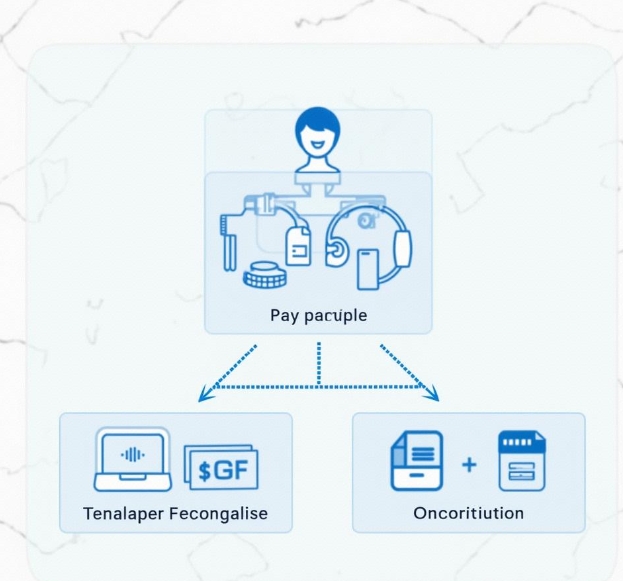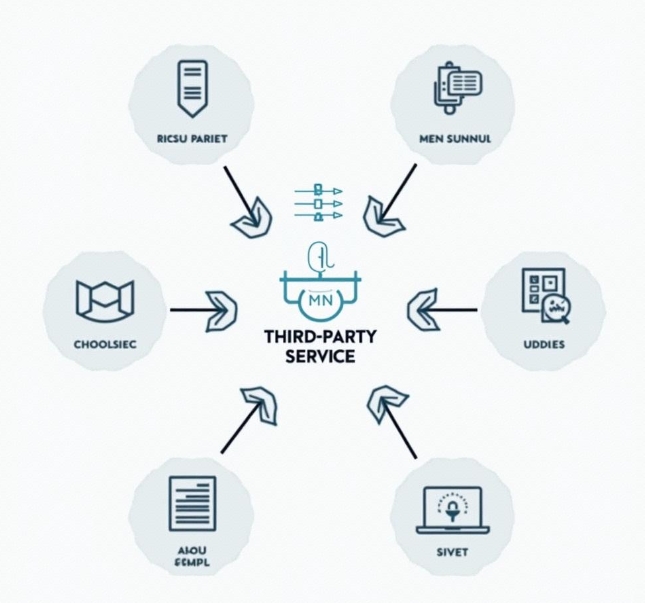Payment Interface and Third-Party Service Integration in Mini-Program Development
- latest articles
- 1.DApp Development & Customization: Merging Diverse Market Needs with User Experience 2.Analysis of the Core Technical System in DApp Project Development 3.How to achieve cross-chain interoperability in Web3 projects? 4.How does the tokenization of points reconstruct the e-commerce ecosystem? 5.How to Set and Track Data Metrics for a Points Mall? 6.What is DApp Development? Core Concepts and Technical Analysis 7.Inventory of commonly used Web3 development tools and usage tips 8.Development of a Distribution System Integrated with Social E-commerce 9.Six Key Steps for Businesses to Build a Points Mall System 10.What is DApp Development? A Comprehensive Guide from Concept to Implementation
- Popular Articles
- 1.Future Trends and Technology Predictions for APP Development in 2025 2.Analysis of the DeFi Ecosystem: How Developers Can Participate in Decentralized Finance Innovation 3.From Zero to One: How PI Mall Revolutionizes the Traditional E-commerce Model 4.DAPP Development | Best Practices for Professional Customization and Rapid Launch 5.Recommended by the Web3 developer community: the most noteworthy forums and resources 6.From Cloud Computing to Computing Power Leasing: Building a Flexible and Scalable Computing Resource Platform 7.How to Develop a Successful Douyin Mini Program: Technical Architecture and Best Practices 8.Shared Bike System APP: The Convenient Choice in the Era of Smart Travel 9.How to Create a Successful Dating App: From Needs Analysis to User Experience Design 10.From Design to Development: The Complete Process of Bringing an APP Idea to Life
This article will provide a detailed explanation from the basic concepts and integration process of mini-program payment interfaces, the selection of common payment interfaces, the integration methods of third-party services, and the security measures of the payment system, helping developers understand and master the relevant technologies and providing assistance in implementing payment functions during the development process.
I. Overview of Mini-Program Payment Interfaces
A payment interface refers to the process of connecting a mini-program with a payment platform through code to enable payment functionality. Its main purpose is to allow users to make online payments through the mini-program, whether for purchasing goods, recharging accounts, or paying for services. For merchants, integrating a payment interface enables payment collection capabilities; for users, the payment interface provides a convenient and fast payment method.
Payment interfaces are generally divided into two categories: bank payment interfaces and third-party payment interfaces. In mini-program development, third-party payment interfaces are predominantly used, such as WeChat Pay, Alipay, and JD Pay.
1. WeChat Pay Interface
WeChat Pay is one of the most common mini-program payment interfaces and an indispensable part of mini-program development. WeChat Pay not only provides merchants with user payment functionality but also offers convenience, security, and speed, allowing users to complete payments using their WeChat accounts.
The core process of the WeChat Pay interface includes: the user initiating a payment request, the merchant backend generating a payment order, calling the WeChat Pay API, the WeChat client displaying the payment page, the user confirming the payment, and processing the callback after a successful payment.
2. Alipay Interface
As another mainstream payment method, Alipay is widely used in mini-programs. The integration process for Alipay is similar to that of WeChat Pay, involving steps such as order generation, payment requests, and callback processing via APIs.
The advantage of the Alipay interface lies in its cross-platform capabilities, support for multiple payment methods, and its extensive user base in China. When integrating Alipay, developers need to pay attention to interface version updates and integration security.
II. Third-Party Service Integration
In addition to payment interface integration, third-party service integration is also an important part of mini-program development. Third-party services can include SMS interfaces, data analysis interfaces, advertising services, user identity verification, etc. By integrating these third-party services, mini-programs can offer richer and smarter services, improving user experience and platform operational efficiency.
1. SMS Interface Integration
SMS services are a common feature in many mini-program applications. Whether for user registration, password recovery, order notifications, or payment reminders, SMS interfaces play a crucial role. Common SMS service providers include Alibaba Cloud SMS, Tencent Cloud SMS, and Yunpian.
The basic process for integrating an SMS interface includes: applying for an API key from a third-party SMS platform, configuring the API interface in the mini-program, sending SMS requests via the API, and processing the returned information accordingly.
2. Data Analysis Interface Integration
In modern mini-program development, data analysis is crucial. By integrating data analysis tools, developers can gain real-time insights into user behavior, product usage, traffic sources, and other information, providing data support for subsequent optimization and decision-making. Common data analysis service providers include Tencent Cloud analytics tools, Umeng+, and GrowingIO.
The process of integrating a data analysis interface typically includes: integrating the SDK into the mini-program, configuring necessary parameters, enabling data reporting functions, and monitoring user behavior data.
3. Identity Verification Interface Integration
With the widespread use of the internet, user identity verification has become increasingly important. By integrating third-party identity verification interfaces, platforms can effectively ensure the security of user data, preventing malicious operations and account theft. Common identity verification service providers include Tencent Cloud facial recognition, Baidu AI, and Yunzhisheng.
When integrating identity verification interfaces, developers need to perform user identity authentication via API integration, ensuring both convenience and security in the verification process.
III. Considerations for Payment Interface and Third-Party Service Integration
In mini-program development, the integration of payment interfaces and third-party services requires extra caution to ensure interface stability, security, and compliance. Below are key issues developers should pay attention to during the integration process:
1. Security Assurance
Payment interfaces involve the flow of user funds, making security particularly important. Developers need to employ multiple encryption methods, HTTPS protocols, and callback verification to ensure payment data is not leaked during transmission. Common payment security measures include: encrypting API request parameters, verifying payment credentials, and preventing payment interruptions.
Additionally, for third-party service integration, it is essential to ensure the security of data transmission to prevent interface leaks or malicious attacks. Using secure and reliable service providers and privacy-protecting authentication mechanisms can effectively enhance security.
2. Compliance and Policy Adherence
For the integration of payment interfaces and third-party services, developers must also ensure compliance with relevant laws, regulations, and policy requirements. In China, the payment industry must comply with regulations such as the "Payment and Settlement Management Measures" and the "Cybersecurity Law," while third-party service providers must adhere to regulations like the "Data Protection Law" and the "Personal Information Protection Law." Ensuring all data processing and payment operations meet compliance requirements helps avoid legal risks.
3. Interface Stability and Scalability
Once payment interfaces and third-party services are integrated into mini-programs, they typically need to operate long-term. Therefore, interface stability and scalability are particularly important. When selecting payment interfaces and third-party service providers, developers should evaluate factors such as system reliability, scalability, and service response speed.
IV. Summary
In mini-program development, the integration of payment interfaces and third-party services is a complex and critical task that directly impacts platform operational effectiveness and user experience. Developers need to consider integration solutions from multiple dimensions, including the selection of payment interfaces, the integration of third-party services, security assurance, and compliance requirements.
-

How to Increase User Stickiness and Activity Through Mini Program Development
With the development of the internet and mobile internet, mini-programs, as an e···
-

How can mini-program development assist in corporate marketing and e-commerce transformation?
In today's rapidly evolving mobile internet landscape, corporate marketing and e···
-

Offline Functionality Design and Data Synchronization in Mini-Program Development
With the rapid development of mobile internet, mini-programs, as a lightweight a···

 Blockchain
Blockchain












